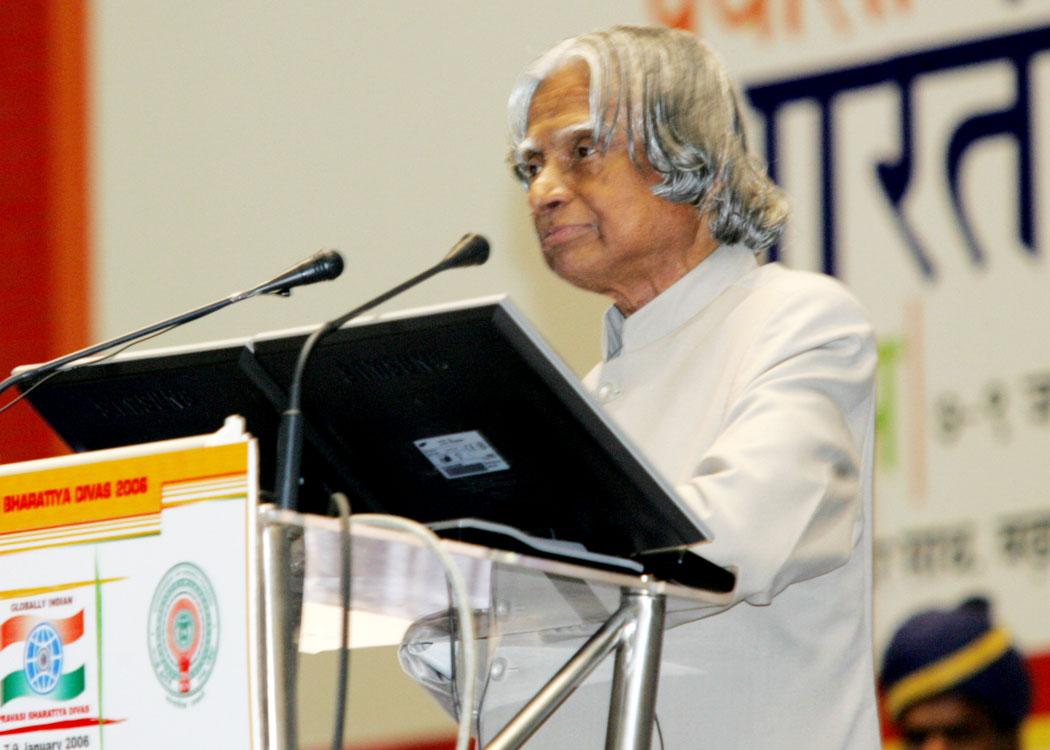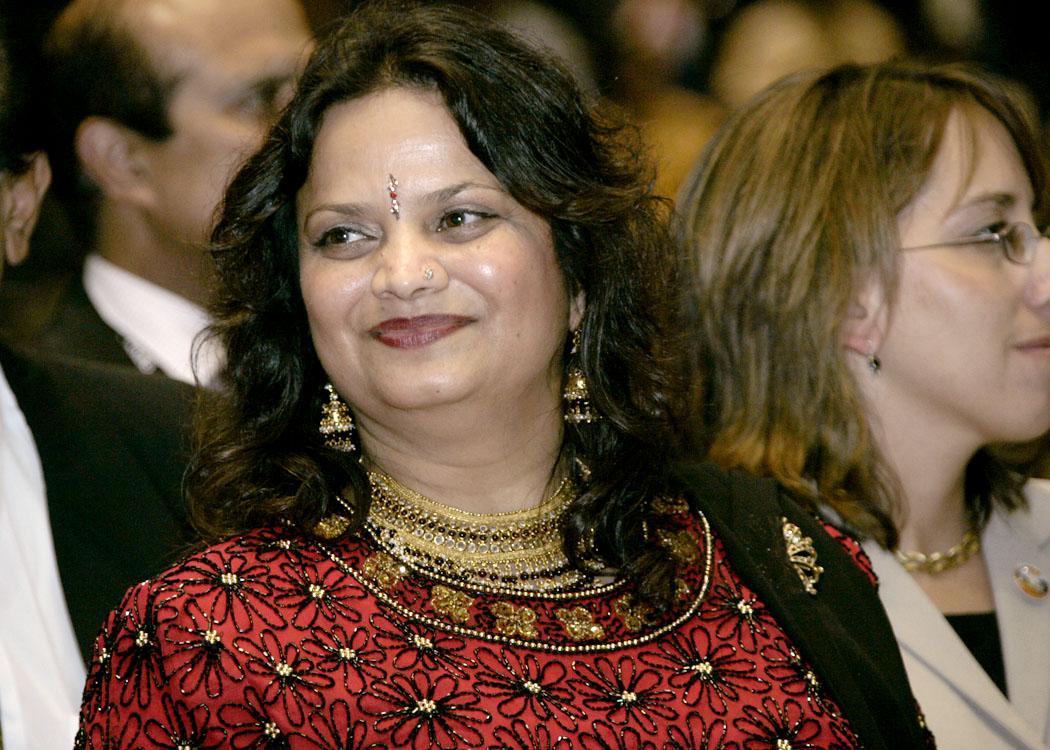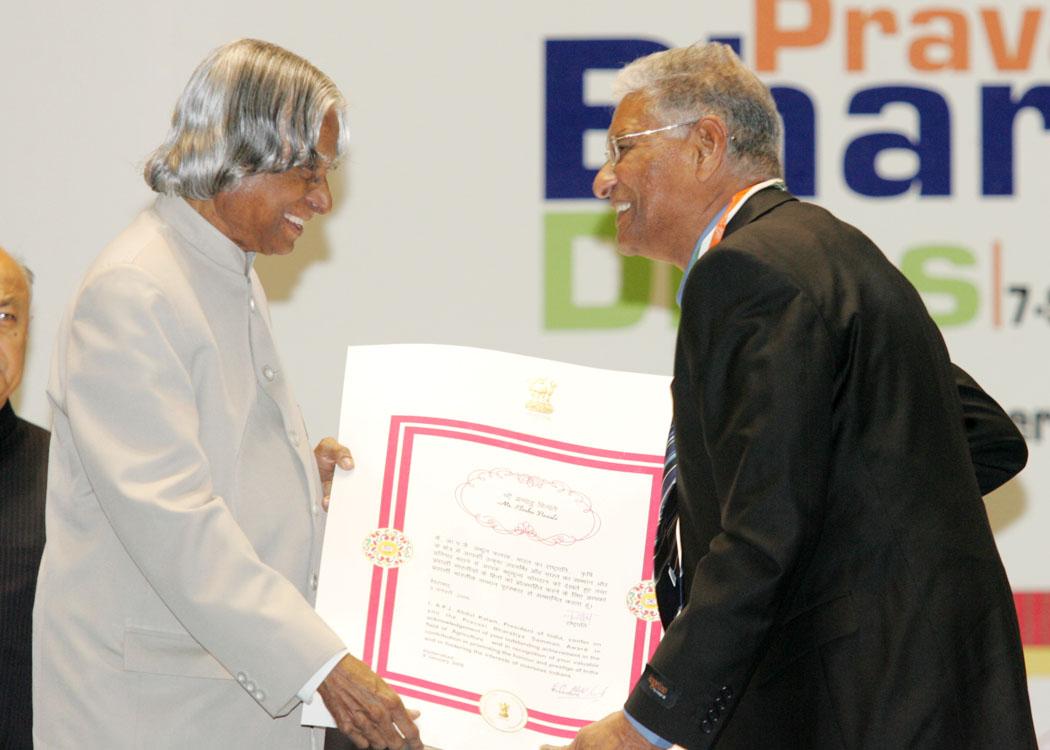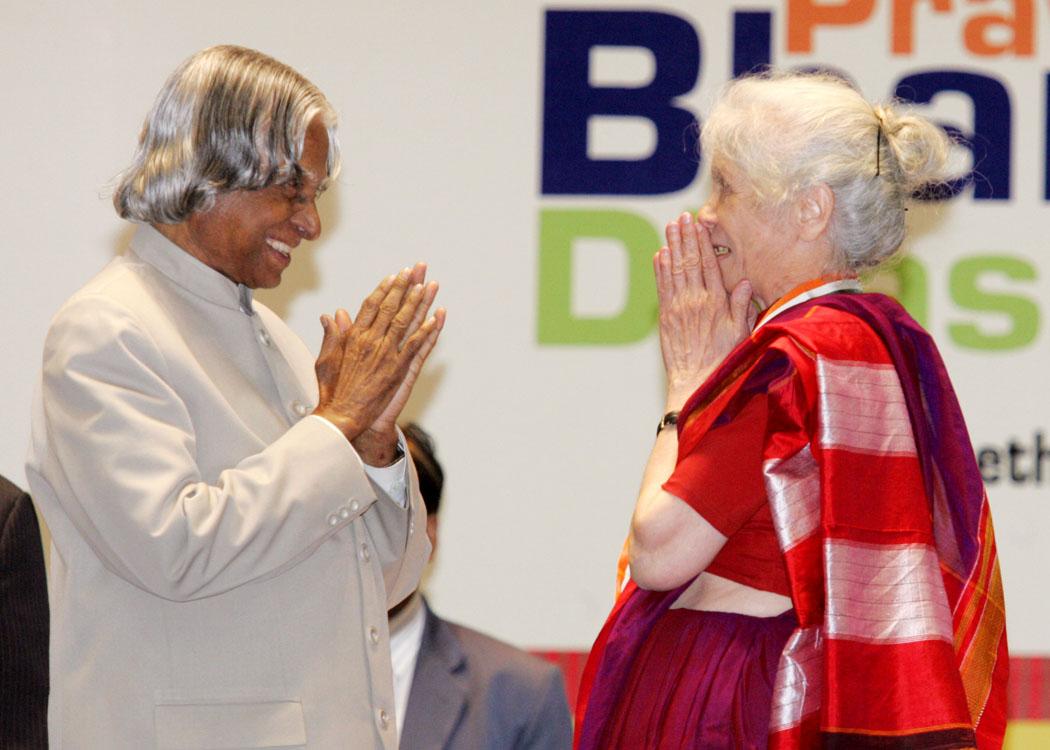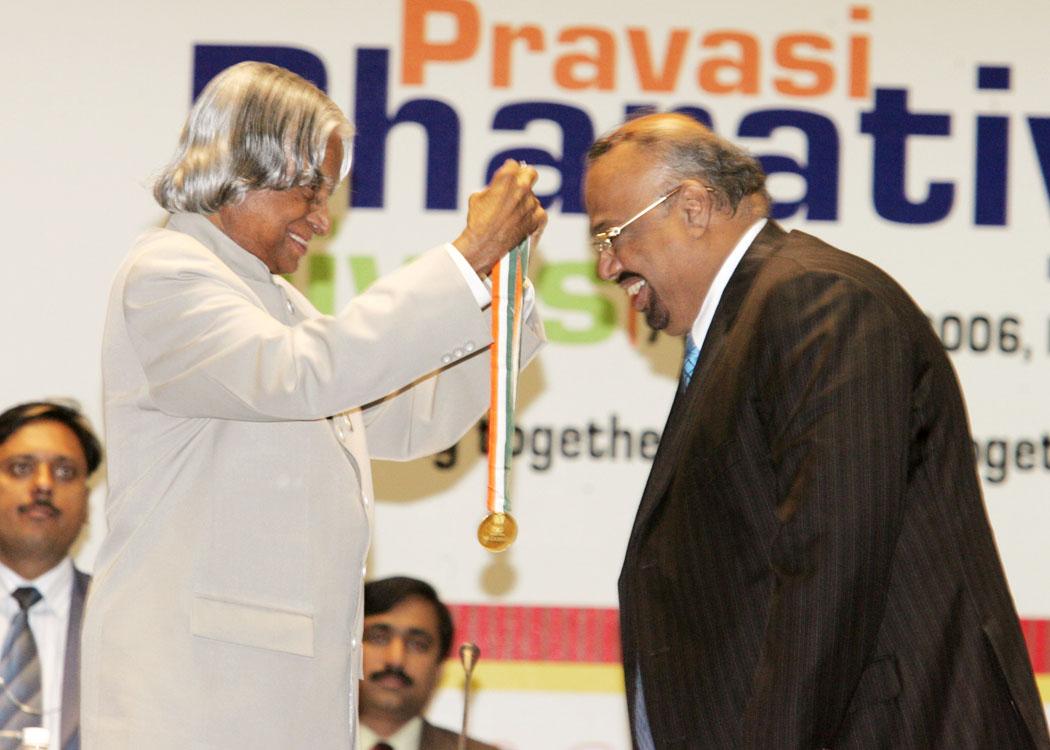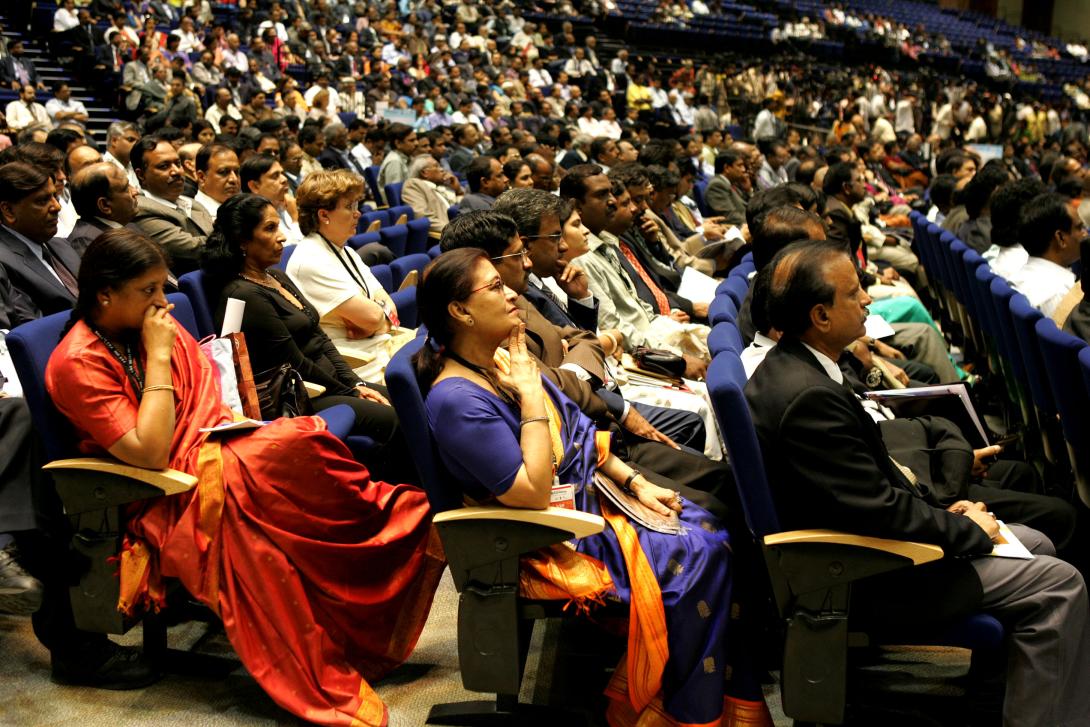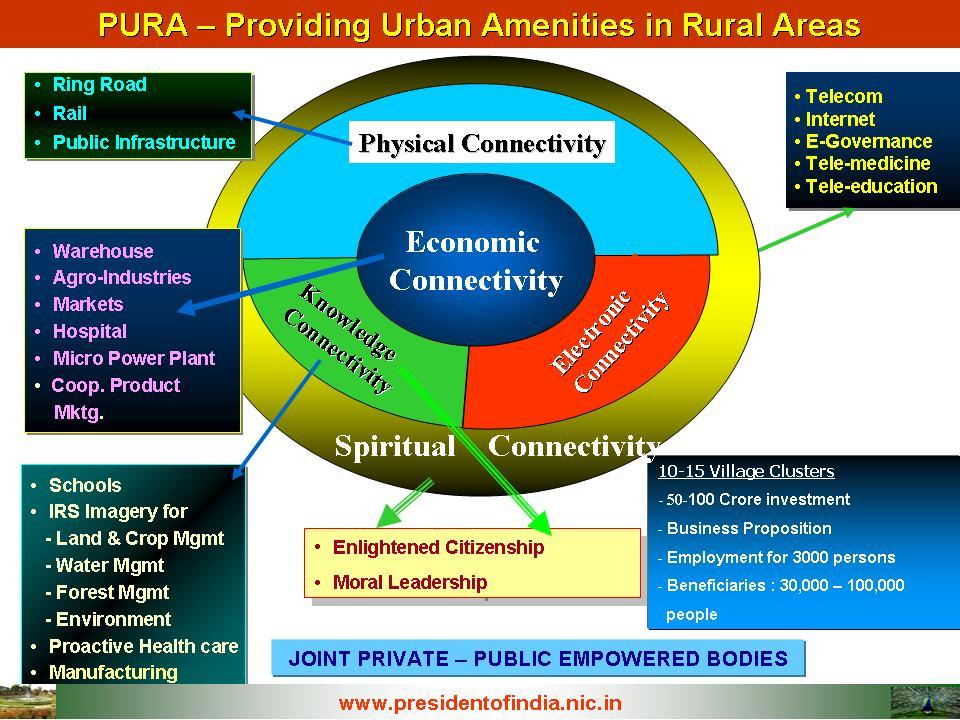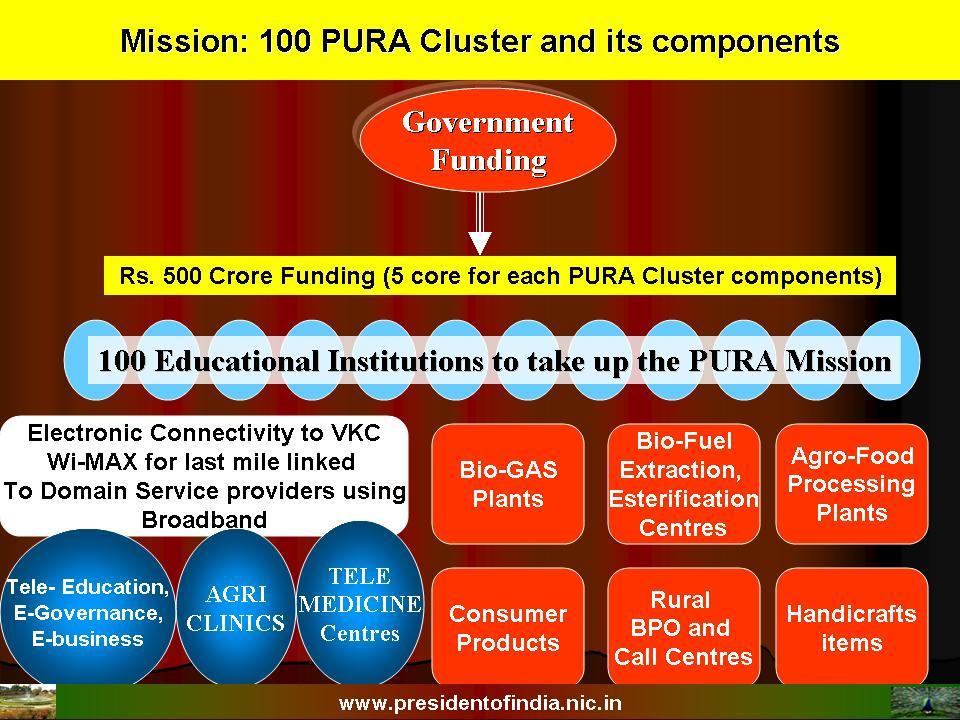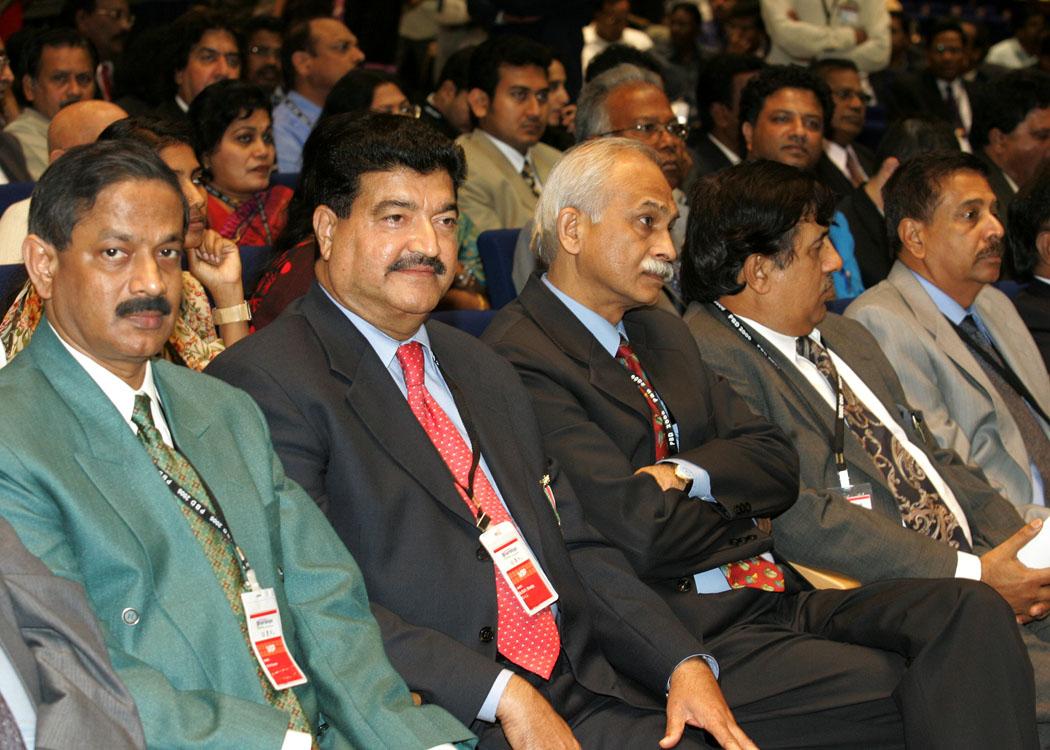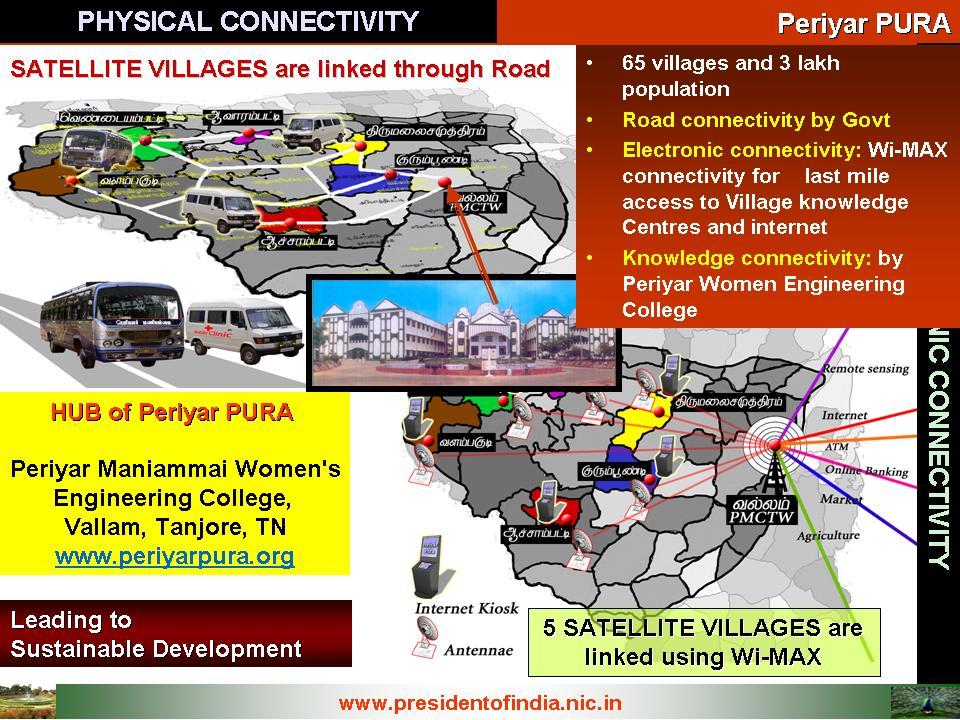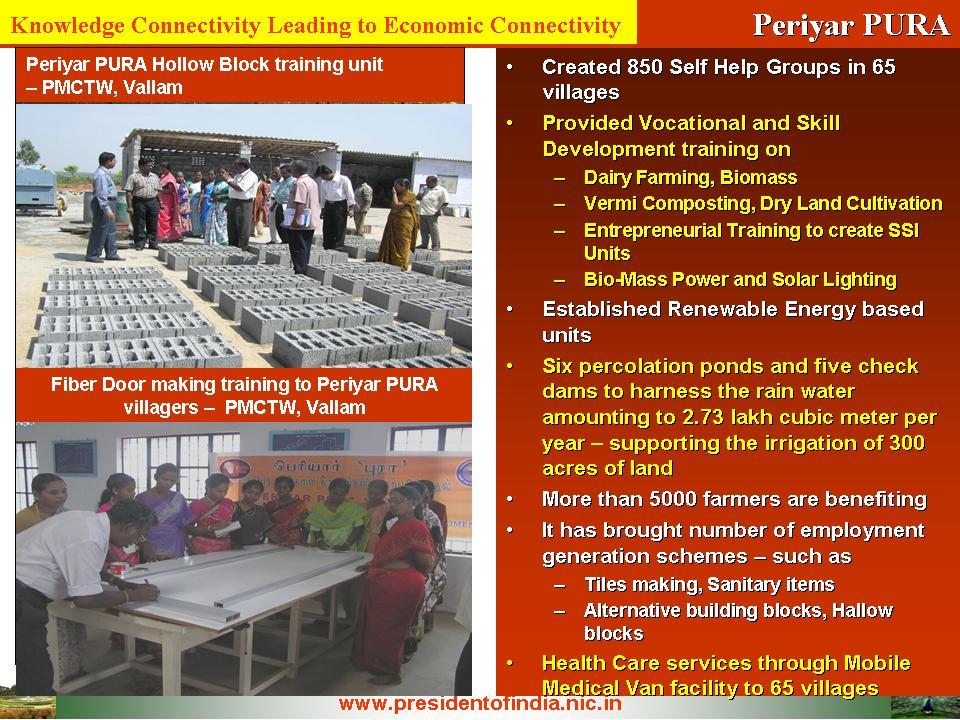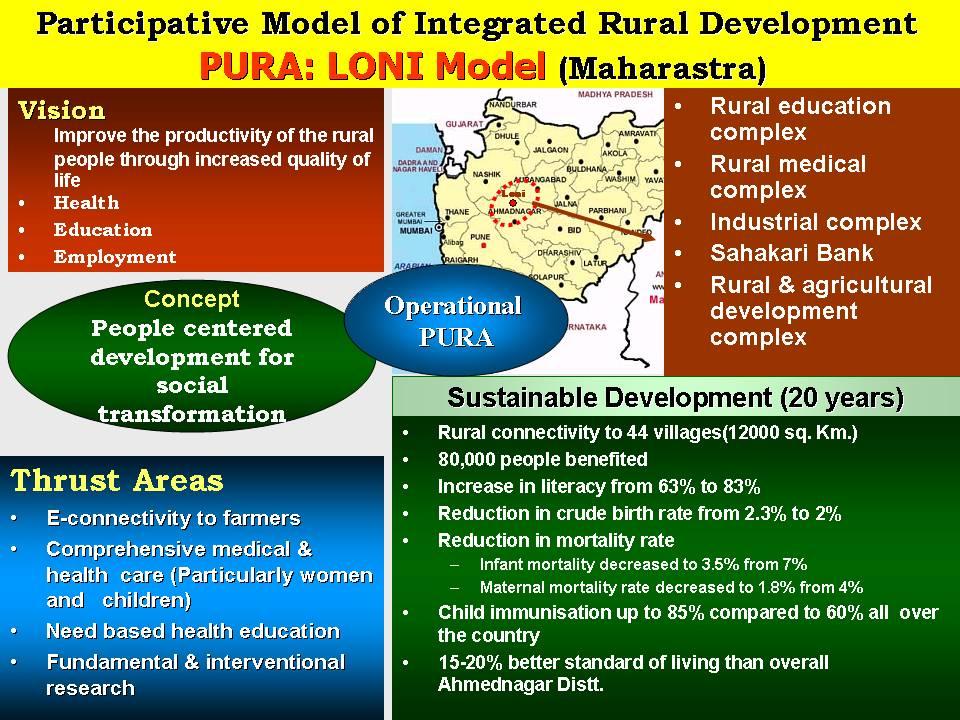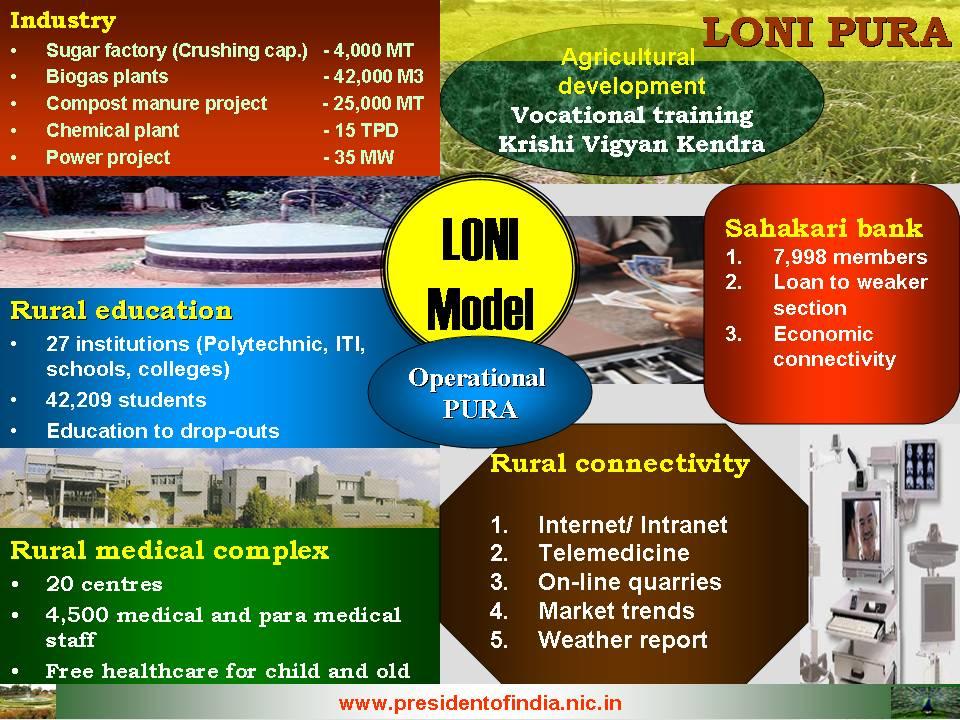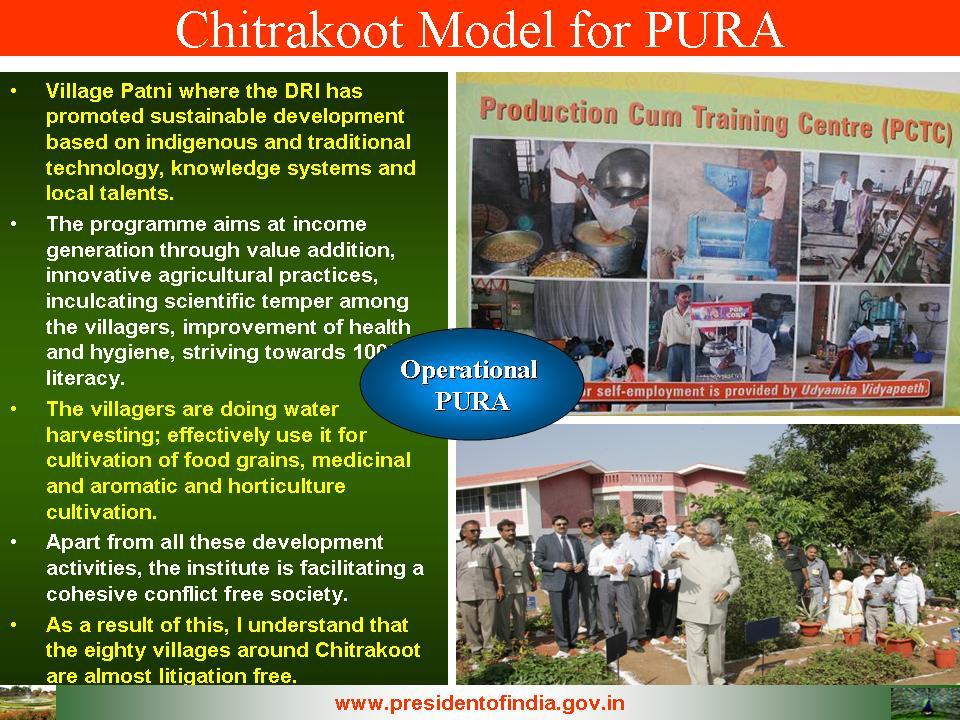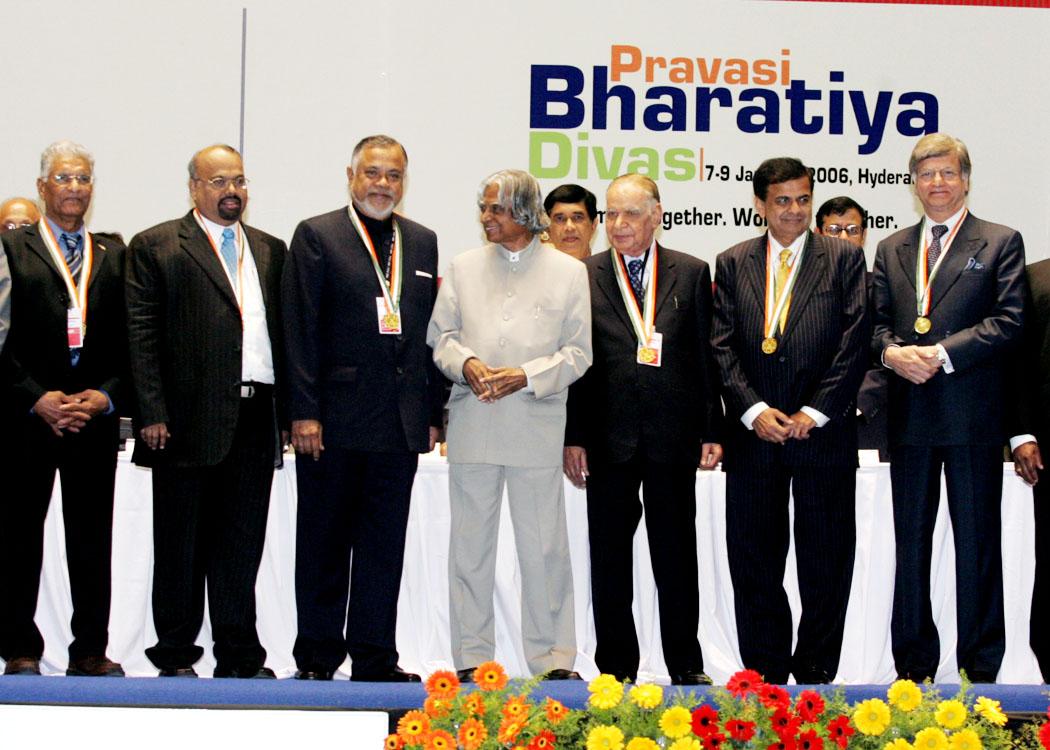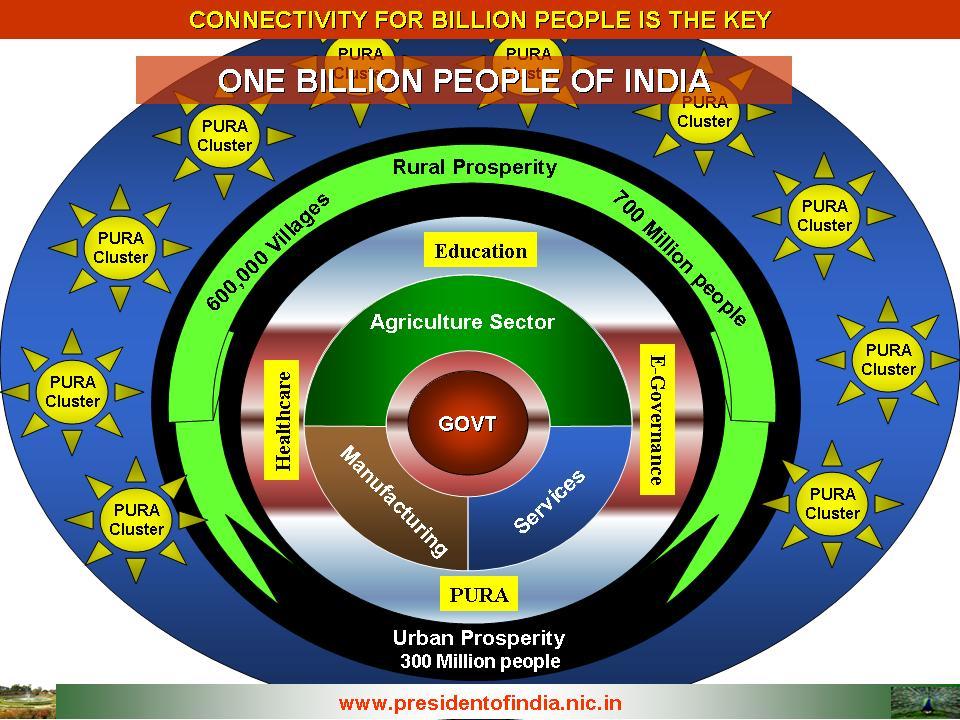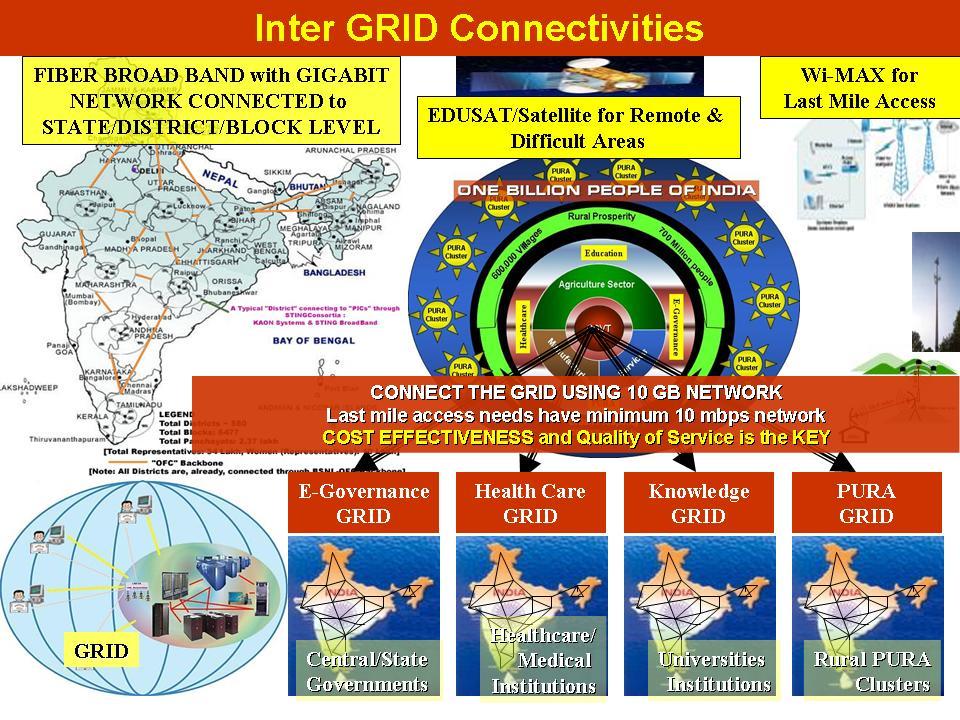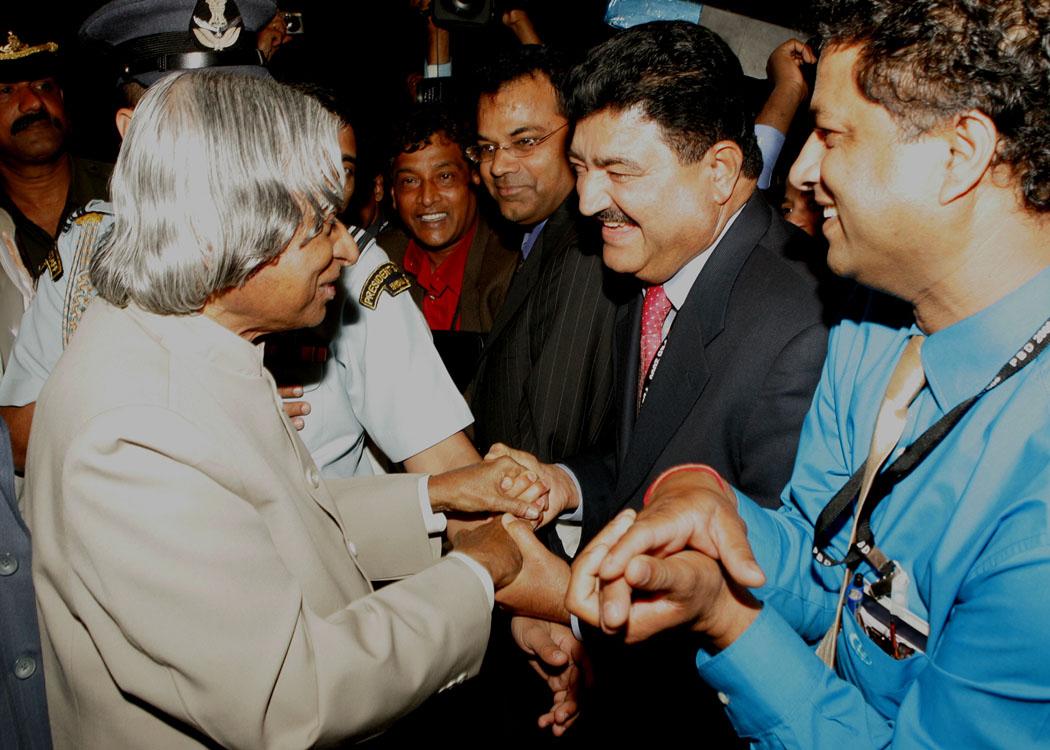Valedictory Address On Pravasi Bharatiya Divas - 2006, Hyderabad
Hyderabad : 09-01-2006
Umbilical Connectivity and Societal Change
I am delighted to participate in the conferment of Pravasi Bharatiya Samman Awards 2006. I congratulate the award winners for their contribution in promoting international understanding for healthy bilateral relationship between the countries and enable us to project the right image of India abroad. I am happy to meet you all in this gathering. I also congratulate the PIO's for the Overseas Citizenship of India (OCI). My greetings to the organizers - Ministry of Overseas Indian Affairs in partnership with Government of Andhra Pradesh and the Federation of Indian Chambers of Commerce and Industry.
Cultural deprivation
Sometime back Nobel Laureate Sir V.S. Naipaul met me with his wife Lady Nadira. We walked through the Mughal Gardens in Rashtrapati Bhavan and discussed various issues related to the history of our country and its people. Sir Naipaul thoughtfully told me that while India as a Nation is a very recent phenomenon, Indian as people are as old as the mankind on this planet. Sir Naipaul informed me that he is the descendant of unskilled labourers of North Indian Brahmin origin, who were shipped out of India as settlers for farming of the British Empire. He called him a dispossessed child of India whose upbringing in a far away Trinidad familiarized him with a new type of deprivation that is the cultural deprivation. His books reflects his in-built love for the nation of his orgin.
Empire of Indian Mind
Today, the 9th day of January, marks the return of Gandhiji from South Africa to India 91 years ago. His work in South Africa and reasons of his return are well known. The point I would like to make is that when Gandhiji returned, he travelled from one colony to another of an Empire on whose territory; the sun would never set at that time. It would not be an exaggeration, if I say that today the sun truly cannot set on the empire of the Indian Mind. Some children of Mother India are always working wherever the sun is shining on this planet be it Asia, Africa, Australia, Europe, the Americas and, indeed, on the icy reaches of Antarctica. Twenty million children of India live in various parts of the planet and every year it is increasing, because they are needed.
Experiences
Before coming here, I was at Peda Amiran village near Bhimavaram town today morning with Prof MR Raju, a Nuclear Scientist who held important positions in American Laboratories, including Los Alamos National Laboratory, during his 33-years stay there. On 1992, 2nd October the birth aniversary of Mahatma Gandhi, Prof Raju decided to move with his family, permanently to their village and serve the society with their knowledge and wealth. His contribution during the last one decade has made a difference to the village. I participated in the inauguration of a Rural Cancer Treatment and Research Center built by him under Mahatma Gandhi Memorial Trust. I met on that occasion a lawyer, a maxillofacial surgeon and an ophthalmologist; they are all working in the United States and drawn to Raju's mission. I also saw Byrraju Foundation?s work in the rural community. Working in 150 villages across five districts of Andhra Pradesh, it has an impact on nearly one million rural lives. Their programmes include healthcare, education and adult literacy, water, environment and sanitation and livelihood skills. The Foundation is entirely funded by Satyam Computer Services Limited. I can see the impact of their work on Human Development Index in the Bhimavaram region. I discussed with Shri B. Ramalinga Raju, Chairman, Satyam Corporation for establishing the linkage for economic connectivity.
What attracts India?
What does all these people symbolize? What attract people spread across the planet to the land of their origin? I asked this question to a Minneapolis-based engineer Madhu Reddy who met me few days ago in Hyderabad. He informed me that he just signed a MoU with Electronics Corporation of India Ltd to set up a production unit for Digital X-ray (D.R.) systems. These systems are latest in Radiography equipment and have not yet arrived in India due to its prohibitive cost. He told me that not only he would sell the D.R. Systems in a cost effective way to Indian hospitals, and also export to other countries. The product will be internationally competitive. When I asked, ?Why are you doing that? Madhu Reddy replied, ?Sir, while it makes a perfect business sense to manufacture electronic products in India and export them, I also want to repay the debt I owe to this land and society where my forefathers had existed to whom I am just a connected link." Madhu Reddy who is successful in the United States was born and educated here. "There is a debt to be repaid by me,? he says. Friends, it is not only important for the Non-Resident Indians to pay the debt to their motherland but all of us living here have also to pay back the debt to our motherland which has nurtured and grown us.
Four Waves
People of Indian Origin worldwide represent four waves of migration in the past. The first, and probably the longest wave, was of Indians going forth in search of knowledge and opportunity as travellers, as teachers and as traders. Indians went to China and around Indo-China. The second wave was one of enforced migration of indentured labour, a legacy of colonialism. Indians were taken to Africa, West Indies and England. The third wave was a product of partition. The fourth and the most recent wave has been that of Indians empowered with skill and knowledge seeking various type of opportunities and challenges. The destination is the United States, Canada and English speaking European countries and West Asia. Will there be a fifth wave? In the fifth wave, towards the end of 21st century, Indians may participate in the planetary civilization that may result many resourceful Indians inhabitating Mars and entering the space industrial establishment on Moon.
The spirit of movement
The four migratory waves happened in different historical settings for different reasons, but the central theme remained quest for better living conditions and opportunities to excel. Hope to transform, to translate our living present to a productive future is what makes human a unique creature of the Cosmos. This is indeed true of migrants the world over. The important point is that Indians always migrated as individuals and never as communities. In fact even during the Partition, brothers chose to separate rather than migrating as a family. The attraction of the homeland has been historically proved powerful than compulsions of migration, definitely in the long run and over a period of lifetime. The presence of all of you here today testifies this. What is that unique thing that binds an Indian to this land?
The Eternal Mother
Overseas Indians have been successful, thanks to the foundation in education and the heritage their home country gave them, and also the opportunities that the country they have gone has given. I receive visitors settled abroad from all walks of life. Many of them have brought their children first time to their motherland. They look for the warmth of human relations in India. This society remains a loving mother to grown up sons and daughters who always return. This I will call umbilical connectivity between the mother and the children. We belong to same umbilical connectivity, whether you are in India or in any other part of the planet. Friends, India, whose 70% people live in rural areas, has a vision to transform itself into an economically developed country before 2020. Now I would like to discuss what I presented in the Indian Science Congress on 5th January 2006 about how a rural area can be developed with education centres as base line.
Technology for societal transformation
The transformation of India will need transformation of six hundred thousand villages. This would need creation of seven thousand PURAs spread in different parts of the country with physical connectivity, electronic connectivity, knowledge connectivity leading to economic connectivity. I suggested that the decision could be taken to allot Rs. 500 crore to develop 100 PURA Clusters. Each cluster, comprising of 20 to 30 villages, will have an educational institution as a nucleus. The development will comprise of setting up of village knowledge centres; agro-clinics; Tele-education and Tele-medicine centres; and other employment oriented schemes such as bio-gas plants; water treatment plants (brackish to potable water); bio-fuel esterification plant; cold storage; consumer product development; vocational training centres and setting up of business centres by the entrepreneurs for national and international marketing of the products from these rural enterprises. In all these cases, the educational institutions should plan the activities in consultation with local people who are the beneficiaries of this programme.
A Performance Challenge
These hundred PURA programmes originating from educational institutions and with public-private partnership will provide the experience for taking up big programmes in future in an industrial scale. This undertaking will build the capacities of the villagers and encourage the Indian entrepreneurs to become an active partner in this development process. These activities should not be treated as mere experiments and scientific knowledge; it is the application of science and technology to societal transformation. The winners are the academic institutions and the rural people belonging to the PURA Clusters. Finally, there should be a clear assessment whether the villagers have been benefited. A joint team of the village members and the scientists/technologists can do this. This will lead to the birth of the Civic Scientists. This is the performance challenge, which I would like to pose to the experienced scientific community and to the Government officials. This mission I gave since I had seen three operational PURA projects: one in Tamil Nadu which I have discussed earlier in the last year, second in Maharashtra and the third in Madhya Pradesh. I would like to describe the three PURA systems to the members assembled here.
Periyar PURA (Tamil Nadu): I have inaugurated Periyar PURA complex pioneered by Periyar Maniammai College of Technology for Women, Vallam in Tanjore, a year back. I thought of sharing with you the developmental concept of a cluster of over 65 villages near Vallam, Thanjavur district of Tamil Nadu that involves a population of 3 lakhs. This PURA complex has all the three type of Connectivity - physical, electronic and knowledge - leading to economic connectivity.
The centre of activity emanates from the women engineering college that provides the electronic and knowledge connectivity. Periyar PURA has health care centres, primary to post graduate level education and vocational training centres. This has resulted in large-scale employment generation and creation of number of entrepreneurs with the active support of 850 self-help groups. Two hundreds acres of waste land has been developed into a cultivable land with innovative water management schemes such as contour ponds and water sheds for storing and irrigating the fields. All the villagers are busy in cultivation, planting Jatropha, herbal and medicinal plants, and power generation using biomass, food processing and above all running marketing centres. This model has emanated independent of any government initiative. The Engineering institution has provided the committed leadership. Recently, 5 of Periyar PURA villages are connected through Wi-MAX Wireless of 4 mbps connectivity It provides a sustainable economic development in that region. This gives me the confidence that PURA is a realizable proposition and this movement can be multiplied by thousands of entrepreneurs, educational administrators, small-scale industrialists and bankers with the support of the government agencies.
Loni PURA (Maharashtra): At Loni in Maharashtra, pioneered by Pravara Medical trust, a participative model of integrated rural development has come up among 44 villages with the population of 80,000. It is improving the productivity of the rural people through improved quality of life with healthcare, education and employment. The concept is people centric development for social transformation.
The thrust area of development has been on comprehensive Medicare particularly for women and children, need based health education and e-connectivity to the farmers. The complex has created 27 educational and vocational institutions consisting of schools, colleges, polytechnic and ITI including medical and engineering colleges. They have created sugar factory, biogas plants, chemical plants and power projects. They have large number of self-help groups for providing low interest loan for the weaker sections in the society. Due to the co-operative effort of the people, literacy in these villages has gone up from 63% to 83%, birth rate has come down, infant mortality rate has decreased to 35 per 1000 from 70 per 1000 and the standard of living of the people has gone up by over 20% compared to other villages in the neighbouring areas.
Chitrakoot PURA (Madhya Pradesh): At Chitrakoot in Madhya Pradesh, I met Nanaji Deshmukh, the ninety-year-old social worker. His team belonging to Deendayal Research Institute (DRI) is developing and implementing a village development model. Nanaji told me that people's power is more potent, stable and enduring than political power. By becoming one with the oppressed and depressed, one gains the acumen of administration and governance. Social advancement and prosperity are possible only by injecting the spirit of self-reliance and excellence in the younger generation. Using this principle, DRI has plans to develop one hundred clusters of villages having approximately five villages each around Chitrakoot. They have already developed 80 villages in 16 clusters consisting of about 50,000 people.
I witnessed sustainable development at Patni village based on indigenous and traditional technology, knowledge systems and local talents. The programme aims at income generation through value addition, innovative agricultural practices, inculcating scientific temper among the villagers, improvement of health and hygiene, striving towards 100% literacy. The villagers are doing water harvesting; effectively using it for cultivation of food grains, medicinal and aromatic and horticulture cultivation. Apart from all these development activities, the Institute is facilitating a cohesive conflict free society. I understand that the eighty villages around Chitrakoot are almost litigation free. The villagers have unanimously decided that no dispute will be taken to court and the differences will be sorted out amicably in the village itself. Nanaji told me that if the people fight among each other they would have no time for the development. This message has been understood by the society.
The Institute has developed a novel concept of putting a graduate married couple at the hub of the societal transformation. Called ?samaj-shilpi dampati? (societal sculpture couple), they counsel and intervene in the affairs of the village citizens. In the same Chitrakoot environment there is another social organisation called Shri Sadguru Seva Sangh trust is carrying out number of social activities including the running of quality eye care centre.
GRID Connectivities
India has embarked on a mission to provide connectivity for billion people in the form of GRIDs. This GRID gives national connectivity consisting of Knowledge GRID, Health GRID, E-Governance GRID and PURA GRID. That means citizen to citizen, citizen to state, Government to Government and citizen to institutions and organisations are connected. This GRID system will certainly maximize the synergy between the organisation and people leading to faster economic growth and productivity. The Grids are as follows:
1. Knowledge GRID - Inter-connecting Universities with socio-economic institutions, industries and R&D Organisations.
2. Health Care GRID - Inter-connecting the Health Care institutions of Government, Corporate and Super speciality hospitals, research institutions, educational institutions and ultimately, Pharma R&D institutions.
3. E-Governance GRID Inter-connecting the Central Government and State Governments and District and Block level offices for G2G and G2C connectivity.
4. PURA GRID - Connecting the PURA Nodal centres with the Village knowledge centres and Domain service providers. Since this is the backbone for rural development all other GRIDs will infuse the knowledge into this GRID for sustainable development, healthcare and good governance. For example, five of the Periyar PURA villages have now been connected with Periyar Maniammai College and Rashtrapati Bhavan using Wi-MAX connectivity.
5. Integrated Village Knowledge Centers will act as an inter-connected delivery mechanism for tele-education, tele-medicine and e-Governance services apart from individual access by the people, within and between the Village Knowledge Centres.
This GRID will weave the people together in to a strong social fabric. Apart from economic prosperity it will bring societal transformation.
Conclusion
Friends, in a rural environment, I find a revolution is taking place due to the sustained effort of committed leadership for removing human pain. We are all part of our nation. What the more fortunate among us have to do is to provide the leadership that can help bring about transformation in the other India. India has got 600,000 villages. I am sure each one of you assembled here will have a connectivity with one of these villages. You can definitely provide the leadership for transformation of the cluster of villages around your village with your experience and knowledge connectivity. If it is interests you, you can definitely become a partner in this noble mission.
I am sure that after living in foreign societies you would have realized that each one of us is a member of the extended human family. We have the same hopes and aspirations, fears and longings, desires and dreams. Our station in life is dictated by a random draw that was made by forces beyond our imagination even, leave alone our control.
Working in rural areas is not easy. It is like Kurukshetra, as my friend Prof MR Raju termed it. Still it gives him wholesome satisfaction to serve the rural people. To come here and participate in the societal transformation is indeed a spiritual challenge. Each of us, wherever we are, can make a commitment in our lifetime to bring about positive change in the land of our birth and enhance its glory. India, seeks your knowledge, experience and the art of success you have learnt through your struggle abroad. She beckons in your success!
My best wishes to all of you for success in your missions wherever you live. Your prosperity is our happiness.
May God bless you.

